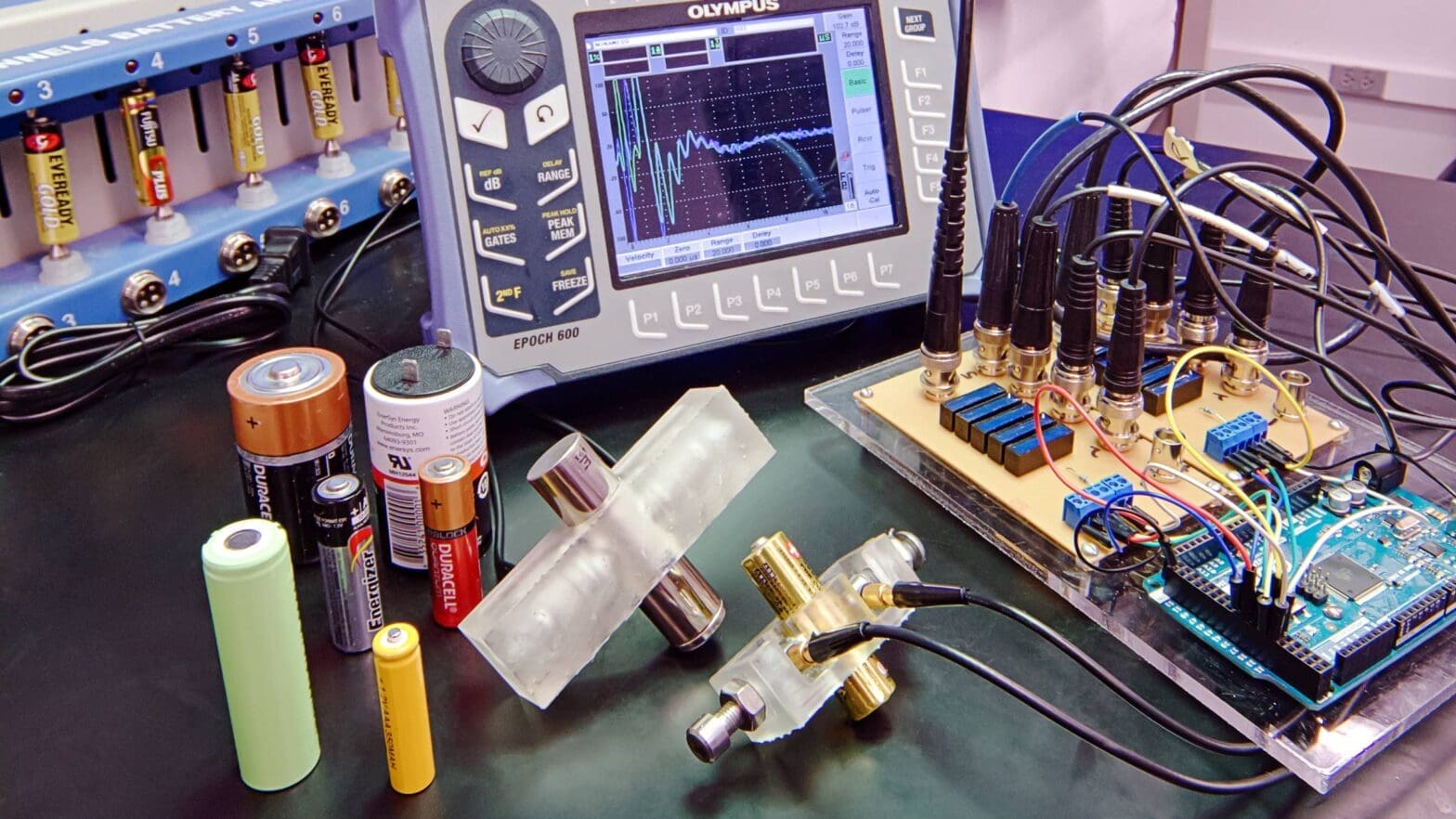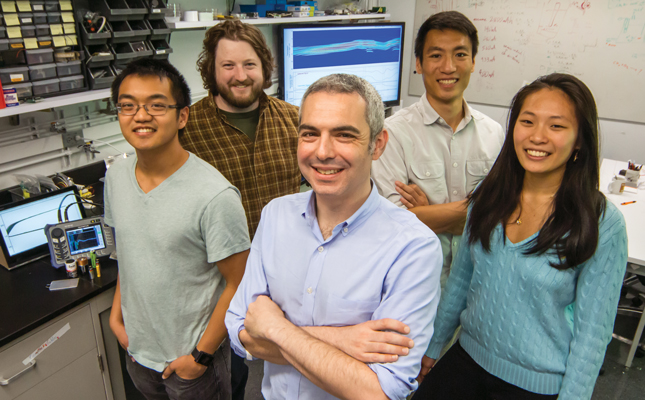
Sounding out the future of batteries
By
on

Tired of your cellphone dying during an important call or your car not starting on a cold morning? Researchers at Princeton think you should listen to your batteries.
“How sound moves through a battery indicates important things about the battery’s internal structure,” said Daniel Steingart, an assistant professor of mechanical and aerospace engineering and the Andlinger Center for Energy and the Environment. “It can show the level of charge and also how the battery is and what has happened to it over its lifespan.”
A team led by Steingart is using sound waves to track batteries’ internal health in real time. The scientists believe their technology will offer a new way for researchers and manufacturers to peer inside batteries and monitor their structures as they discharge. The technology also could eventually be developed into a system that monitors batteries in critical situations such as medical devices or massive systems that store and release energy from wind and solar collectors.
Steingart got the idea for using sound to evaluate batteries after investigating whether fresh batteries bounced less than older ones when dropped on a table. He realized that the batteries’ bounciness related to internal structural changes that occurred when batteries discharged. Steingart believed that sound could probe a battery’s internal structure, similar to the way an ultrasound shows details of the body.
Working with researchers including Jason Fleischer, an associate professor of electrical engineering, and Clarence Rowley BSE ’95, a professor of mechanical and aerospace engineering, Steingart’s team developed a monitor that measures the internal health of a wide variety of battery types. The monitor, which uses transducers to pulse sound through the battery, provides a snapshot view of the battery’s condition and tracks its health over time.
“It is in the early stage, but we are looking at a broad variety of applications,” said Andrew Hsieh Ph.D. ’14, a postdoctoral researcher in mechanical and aerospace engineering. “It certainly has applications as a lab tool, but we also are looking at possible uses in quality control and in battery management.”






